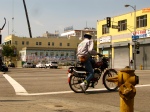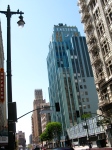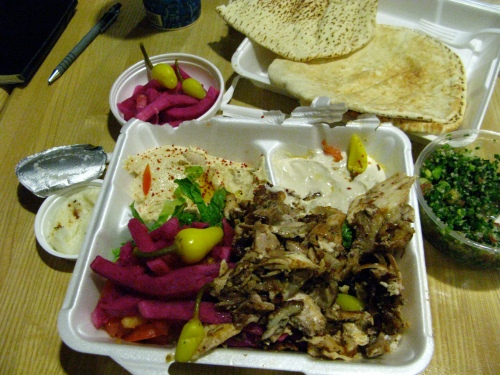From the old streets of the Toy District to the Art Deco towers to the starry sidewalks of Hollywood Boulevard, there is much to love about LA. For one thing, it’s population is about 50 percent Latino, plus a healthy percentage of African Americans, Asians and Arabs, among others, so there’s this wonderfully American ethnic stew feel to the place, especially so in the less touristed neighborhoods like, oddly enough, downtown. What’s also nice about this is that the stew part of it he picture isn’t confined to the working class part of the picture (at least not to our just-passing-through perspective) but extends to the young hipsters and the wealthy shoppers and so on.
Downtown is an interesting place, historic in its appearance, and a working place — the streets are busier at the start and end of the day than in between, and the crowd is mostly blue collar — but also clearly neglected, with boarded up old theaters and warehouses alternating with the grandest of old art deco towers imaginable.
Here’s a few shots from one day, which began wandering in the Toy District among the wholesalers (which was a really cool window into that end of the small business economy and both a reminder of how damaged it is right now as well as how vital it remains, if that makes sense), meandered through spicy ramen noodles en route to Hollywood Boulevard (where I found the pulsing presence of so much WANT — for success, or fame, for simple recognition – sort of exhausting) to the working class end of Melrose, where hair salons and car washes mix it up with book shops and Thai groceries, to the Griffith Observatory and a perfect sunset (where the dramatic effects of LA’s famous smog are, well, clear). We wrapped the night up at Daikokuya, the busiest restaurant in Little Tokyo’s bustling noodle shop row and seen here in a daytime shot from our hotel window. We waited over an hour to get in, and it was well worth it for the delicious, sweet and seaweedy pork noodles and rice bowls.

































